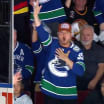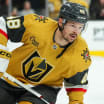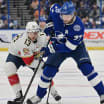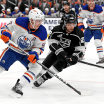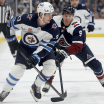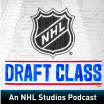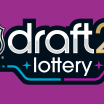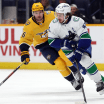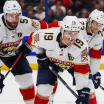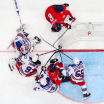Kari Takko thinks back to seven and a half years ago, when he was looking at defenseman John Klingberg's wispy frame and ordinary skating ability.
"So small and skinny," Takko, the Dallas Stars director of European scouting, told NHL.com in a phone interview from Finland.
Gamble on Klingberg has paid off handsomely for Stars
Thanks to scouts' hunch, Dallas has developed elite all-star defenseman
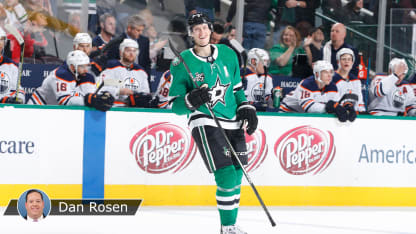
Klingberg, a native of Gothenburg, Sweden, was 5-foot-11, maybe 160 pounds when wearing his sweaty gear. He was playing at the junior levels for Frolunda, his hometown program. He wasn't ready for the Swedish Hockey League. He didn't play for any Swedish national teams.
Takko and Stars Swedish scout Rickard Oquist still pushed hard to pick Klingberg in the fifth round, pick No. 131, of the 2010 NHL Draft in Los Angeles. They might have been the only two people on the entire draft floor doing that.
"If I recall right, we were the only guys who talked to him," Takko said.
Are they ever thankful they did, because today Klingberg, 25, is a 6-foot-2, 177-pound Stars defenseman heading to the 2018 Honda NHL All-Star Game in Tampa on Jan. 28 (3:30 p.m. ET; NBC, CBC, SN, TVA Sports).
He leads League defensemen in assists (33) and points (39).
"He can play all night because he's got that stamina and he's got that skating ability now," Stars general manager Jim Nill said. "The game is easy for him and it's going to get easier."
Takko was hooked on Klingberg because of his skill.
"He was so in charge with the puck all the time," Takko said.
Takko also looked at Klingberg's family; his father, Anders, and his brother, Carl, and projected a growth spurt. Carl Klingberg, who played 12 games over four seasons with the Atlanta Thrashers/Winnipeg Jets from 2010-15, is 6-foot-3 and 205 pounds.
"You knew he was going to get bigger, but how much bigger?" Takko said. "His big brother is a huge guy and his father is a big guy too, so it was like, 'Let's hope.' It turned out to be fine."
John Klingberg arrived in the NHL in 2014-15, but the Stars had talked to him about coming over the season prior, figuring he might be ready even though he had an injury-plagued 2012-13 season that limited him to 25 games.
Klingberg said no. He stayed home and played 50 games for Frolunda in the SHL.
"I chose to stay just because of developing more, trying to be an all-around 'D', always making the right plays," Klingberg said. "In Sweden, when you're a young player, you can go really high and really low. That's something I really wanted to figure out."
Klingberg is convinced staying the extra year in Sweden was beneficial, even though he didn't make the Stars roster out of training camp in 2014. He went to Texas of the American Hockey League and lit it up with 12 points in 10 games before the Stars recalled him in November.
"He was burning it up so easy that we brought him up here," Nill said. "He's never gone back."
Klingberg had 40 points (11 goals, 29 assists) in 65 games as a rookie. He had 58 points (10 goals, 48 assists) in 76 games in 2015-16 and 49 points (13 goals, 36 assists) in 80 games last season.
"The things he can do with the puck in tight spaces and under pressure at the blue line, I think he's probably the best in the League for a D-man with the stuff he can pull off," Stars defenseman Dan Hamhuis said. "He's got a skillset that is above and beyond everybody I've played with."
That's high praise coming from Hamhuis, who played with Shea Weber and Ryan Suter with the Nashville Predators. But all that skill and production, it wasn't enough for Klingberg, not with Ken Hitchcock returning to coach the Stars.
Klingberg doesn't see himself as a true No. 1 defenseman yet because he doesn't play on the first penalty-kill unit and because he hasn't quite reached the level that, at least according to Hitchcock, defines a No. 1.
"To me, if you're going to be a 'one' you have to be error free from the red line back and you have to be creative from the red line in," Hitchcock said. "That's a hard player to find. [Klingberg] is always going to be an exceptionally patient player with the puck.
"He's very similar to [Kevin Shattenkirk] that way. He's got ice in his veins when you're in high pressure situations. Where I think [Klingberg] can get to be a top-pair guy on a consistent basis is if he does less under pressure, if he learns that a territorial play is the right play."
That has been Klingberg's challenge, becoming a less-is-more player, using his skillset when he must, but being smart enough to get out of trouble, to avoid getting hit, to understand moving the puck into a safer area is never bad.
"I always talk to him about Nicklas Lidstrom," Nill said. "That's a bad example for any defenseman because Nick was so good, but I tell him that Nick didn't try to win the game every shift, he just tried to win it when he knew there was an opportunity or when there were five minutes to go and we were down by a goal. Otherwise, he'd manage the game.
"When [Klingberg] learns to manage the game, he's going to be an even more dominant player."
Klingberg said he thinks he's getting there. Hitchcock agreed.
"I feel like I have even more of an offensive game this year than I had last year, and I play safer at times too," Klingberg said. "I feel really good about my all-around game."
It's the game Takko thought Klingberg could play in the NHL if he grew a little, put on some muscle and weight to turn his frame from slight to sturdy.
Those unknowns made picking Klingberg, even in the fifth round, a gamble.
The Stars won.
"It's easy now to say he should have gone higher," Nill said. "Everybody develops at their own pace to make these great stories.

